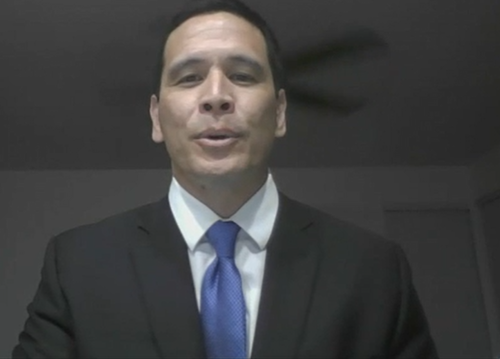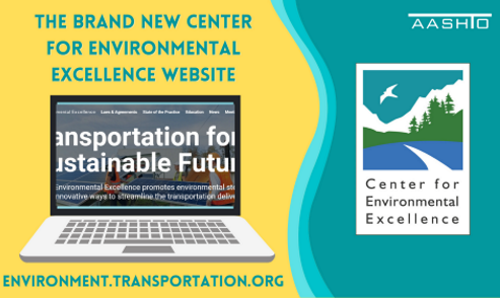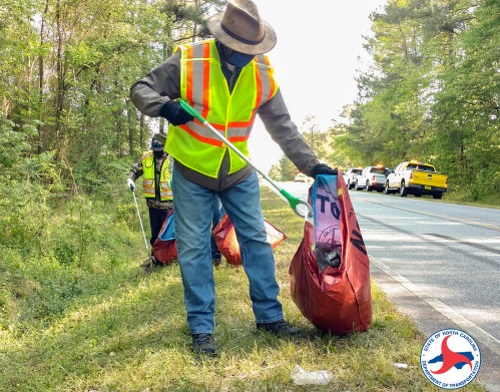FEDERAL ACTION
AASHTO Applauds Senate EPW Leaders’ Bipartisan Reauthorization Legislation – AASHTO Journal
Bipartisan group of senators introduces surface transportation bill – The Hill
House Republicans unveil $400 billion Starter Act proposal – Land Line
U.S. lawmakers to propose tax credit for sustainable aviation fuel – Reuters
Fixing Transit Is More Than Just Infrastructure – CityLab (Opinion)
COVID-19
California To Provide COVID-19 Relief For Ports – Escalon Times
INFRASTRUCTURE RESILIENCE AND SUSTAINABILITY
Infrastructure Funding Options Debated at Senate Hearing – AASHTO Journal
State DOTs Share Transportation Resilience Strategies – AASHTO Journal
Pipeline Security Act Reintroduced in House – Nextgov
Colorado Is Sure It Can Expand Highways While Also Meeting Climate Goals. History Suggests That’ll Be A Tough Climb – Colorado Public Radio
Electric vehicle charging: Can Michigan meet the demand? – Michigan DOT’s Talking Michigan Transportation podcast
AIR QUALITY
Environmental Trade-Offs of Autonomous Vehicles: Convenience Will Likely Come at a Cost – SciTechDaily
Inslee signs climate bills, but vetoes parts that tie them to passage of a transportation package – Seattle Times
Crackdown on Emissions ‘Defeat Devices’ Has Amateur Racers Up in Arms – New York Times
Living walls installed to tackle roadside emissions – Highway News
Vermont makes progress in carbon reduction in new state report – Vermont Business Magazine
A ‘narrow’ pathway to a net zero future for greenhouse gases, IEA says – Washington Post
ENVIRONMENTAL JUSTICE
New Environmental Justice Measures Might Revive Cap-and-Trade – Stateline
How electric cars can advance environmental justice: By putting low-income and racially diverse drivers behind the wheel – The Conversation
NATURAL RESOURCES
Act now to save salmon, regardless of dams’ fate – Daily Herald (Editorial)
CULTURAL RESOURCES
How Parking Destroys Cities – The Atlantic (Commentary)
HEALTH AND HUMAN ENVIRONMENT/ACTIVE TRANSPORTATION
Oregon Transportation Commission approves more than $233 million for public and active transportation projects – Mass Transit
Metro Detroit’s bike infrastructure is growing. Here’s how. – Model D
Orlando exploring noise ordinance – WOFL-TV
When Cities Say No to New Transportation Technology – CityLab
Health and the city: using urban design to promote heart health – European Society for Cardiology (Press release)
TRB RESOURCES/ANNOUNCEMENTS
TRB Webinar: Redesigning Transit Networks for the New Mobility Future – TRB
TRB Webinar: Not Easy Being Green–Colorizing Bicycle Lanes to Enhance Safety – TRB
Pedestrian Resources to Help Talk the Walk – TRB
Pedestrians and Cyclists: Better Information to States and Enhanced Performance Management Could Help DOT Improve Safety – GAO
FEDERAL REGISTER NOTICES
Notice of Funding Opportunity for America’s Marine Highway Projects – Maritime Administration (Notice of funding opportunity)
Limitation on Claims Against Proposed Public Transportation Projects – FTA (Notice)
Reissuance and Modification of Nationwide Permits; Correction – Army Corps of Engineers (Final rule; correction)
Intent To Prepare an Environmental Impact Statement for the Lake Okeechobee System Operating Manual (LOSOM), Glades, Martin, Palm Beach, Hendry, Lee, St. Lucie and Okeechobee Counties, Florida. Effects May Extend to Broward, Miami-Dade, Monroe, and Collie – Army Corps of Engineers (Notice of intent)
Federal Plan Requirements for Municipal Solid Waste Landfills That Commenced Construction On or Before July 17, 2014, and Have Not Been Modified or Reconstructed Since July 17, 2014 – EPA (Final Rule)
National Institute of Standards and Technology National Conference on Weights and Measures 106th Annual Meeting – National Institute of Standards and Technology (Notice)
Taking of Marine Mammals Incidental to Specific Activities; Taking of Marine Mammals Incidental to Pile Driving and Removal Activities During Construction of the Hoonah Marine Industrial Center Cargo Dock Project, Hoonah, Alaska – National Marine Fisheries Service (Notice; issuance of an incidental harassment authorization)




